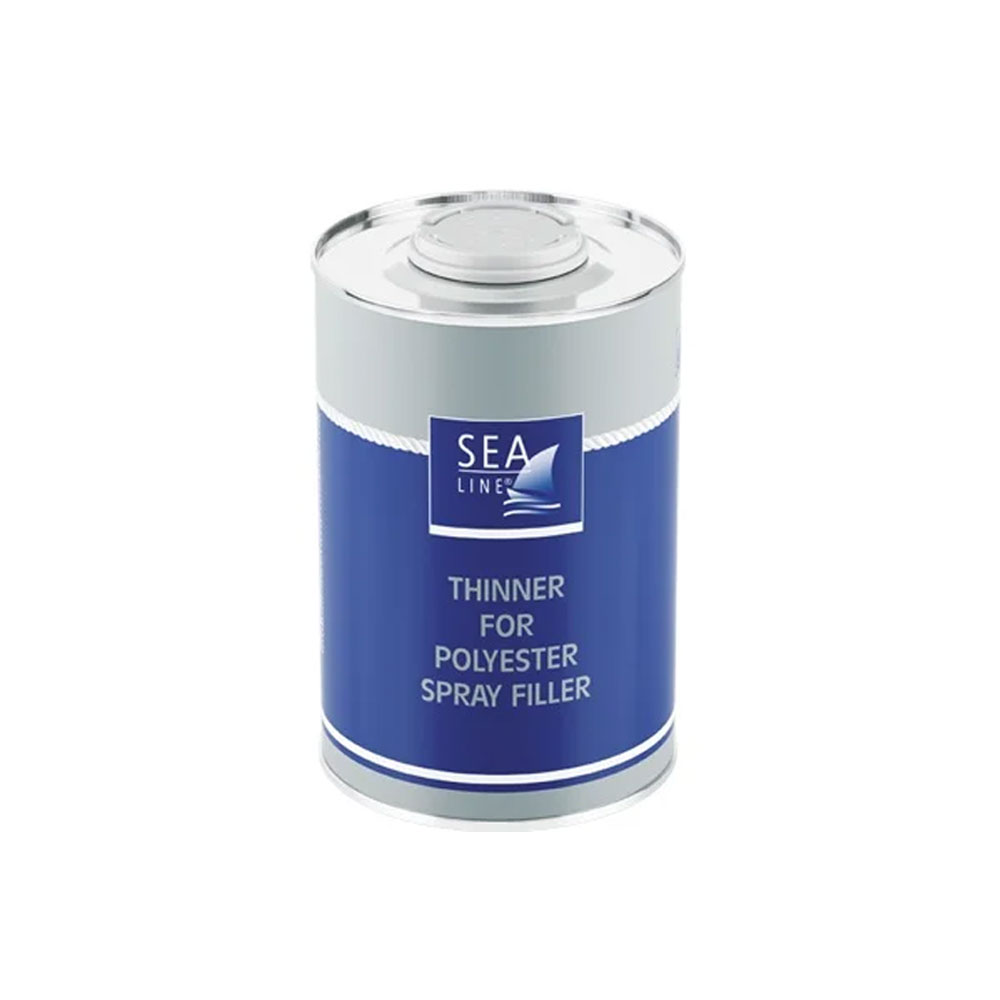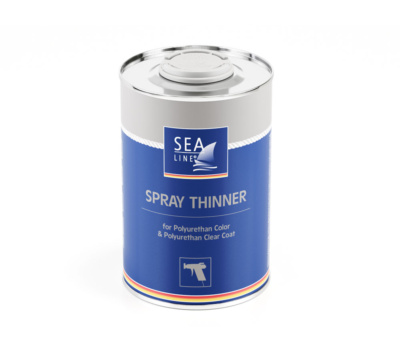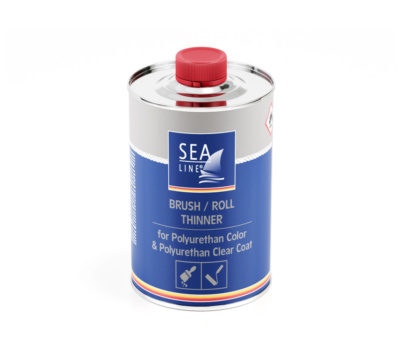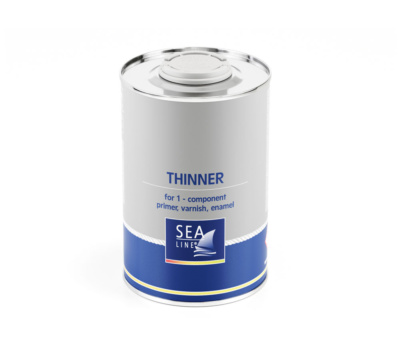It is very important to use paint thinners, which provide the appropriate parameters of paint – flow, potlife, time of drying.
| Capacity | Code |
|---|---|
| 1 l | 7934 |

The thinner for spray polyester putty is a mixture of carefully selected organic solvents. The product designed for thinning Sea-Line® spray polyester putty allows obtaining a product with strictly defined parameters. It ensures proper application and drying. Detailed instructions on the proportions for use are provided in the technical data sheets of the respective products.
Recommended dilution | |
| Type of putty | Spray application |
| Polyester Spray Filler | 0-10% |

Spray thinner for polyurethane color and high gloss polyurethane clear coat. Thinner for the application

Brush and roll thinner for polyurethane color and high gloss polyurethane clear coat. Thinner for

It is very important to use paint thinners, which provide the appropriate parameters of paint
Sea-Line HARD and Sea-Line self-polishing antifouling are not intended for aluminum surfaces. They include copper oxide, which in contact with aluminum causes galvanic corrosion. Especially on aluminum, we offer ALU-PLUS self-polishing anti-fouling paint, which, in addition to excellent adhesion to aluminum, is also 30% more effective than traditional anti-fouling paints.